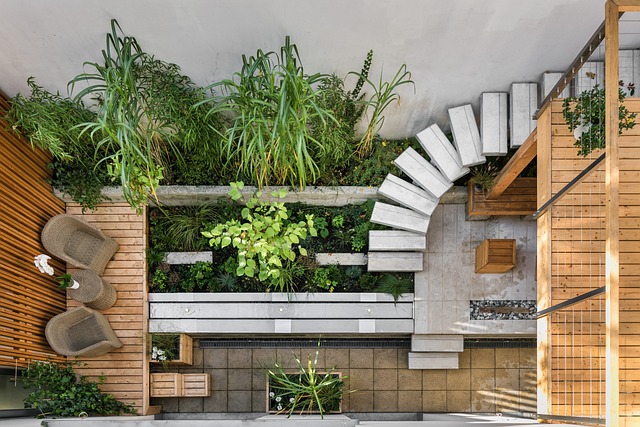Introduction:
As climate change leads to more frequent and severe droughts, it’s essential to find ways to conserve water and maintain beautiful, sustainable landscapes. Drought-resistant landscaping, also known as xeriscaping, is an approach that focuses on using native, low-water plants and efficient irrigation techniques to create a water-wise outdoor space. In this blog post, we’ll explore the benefits of drought-resistant landscaping, recommend drought-tolerant plant species, and offer practical tips for conserving water in your yard. Learn more about sustainable living and climate resilience at ClimatewiseLiving.com.
- Benefits of Drought-Resistant Landscaping
Implementing drought-resistant landscaping techniques offers numerous benefits:
- Water Conservation: Reducing the need for irrigation helps conserve water, a critical resource in drought-prone regions.
- Lower Maintenance: Drought-tolerant plants typically require less maintenance, saving time and effort.
- Cost Savings: Reducing water usage can lead to significant savings on water bills.
- Wildlife Support: Native plants provide essential habitat and food sources for local wildlife, including pollinators.
- Choosing Drought-Tolerant Plant Species
Selecting the right plants is crucial for successful drought-resistant landscaping. Opt for native, drought-tolerant species that are adapted to your local climate and soil conditions. Some examples include:
- Succulents: Plants like agave, aloe, and sedum store water in their leaves, making them highly drought-tolerant.
- Ornamental Grasses: Switchgrass, blue fescue, and muhly grass are low-maintenance options that provide texture and movement in the garden.
- Perennials: Drought-tolerant perennials such as lavender, yarrow, and Russian sage add color and fragrance to your landscape.
- Shrubs: Consider shrubs like Texas sage, oleander, and California lilac for structure and visual interest.
- Trees: Drought-resistant trees like the blue oak, mesquite, and palo verde provide shade and habitat for wildlife.
- Designing a Drought-Resistant Landscape
In addition to choosing the right plants, it’s essential to design your landscape with water conservation in mind:
- Group Plants with Similar Water Needs: Cluster plants with similar water requirements to ensure efficient irrigation and prevent overwatering.
- Mulching: Apply a layer of organic mulch, such as wood chips or bark, around your plants to help retain soil moisture, reduce evaporation, and suppress weeds.
- Incorporate Hardscaping: Use permeable materials like gravel, pavers, or decomposed granite for pathways and patios to reduce the need for water-intensive lawn areas.
- Efficient Irrigation Techniques
Employing water-efficient irrigation methods can significantly reduce water consumption in your yard:
- Drip Irrigation: Install a drip irrigation system to deliver water directly to the plant’s roots, minimizing evaporation and runoff.
- Water Timing: Water your plants early in the morning or late in the evening to reduce evaporation and ensure maximum absorption.
- Rainwater Harvesting: Collect rainwater in barrels or cisterns for use in irrigation, reducing reliance on municipal water supplies.
- Practical Tips for Cooling and Retaining Moisture
Implement these practical strategies to help your drought-resistant landscape stay cool and retain moisture:
- Shade: Plant trees strategically to provide shade for your home and outdoor living spaces, reducing heat and lowering cooling costs.
- Windbreaks: Use hedges or rows of tall plants to create windbreaks, protecting your garden from drying winds and reducing evaporation.
- Soil Amendments: Improve soil structure by adding organic matter, such as compost, to increase water retention and support healthy plant growth.
- Lawn Alternatives for Drought-Resistant Landscapes
Traditional lawns often require significant water and maintenance. Consider replacing them with drought-tolerant alternatives:
- Groundcovers: Low-growing groundcovers like creeping thyme, ice plant, or dymondia can provide a lush, green appearance without the high water demands of a lawn.
- Native Grasses: Replace your lawn with native grasses adapted to your region, such as buffalo grass or blue grama, which require less water and maintenance.
- Artificial Turf: While not as eco-friendly as natural options, high-quality artificial turf can mimic the appearance of grass without the need for watering or mowing.
Conclusion:
Drought-resistant landscaping is an effective way to conserve water, reduce maintenance, and support local ecosystems. By choosing drought-tolerant plant species, designing your landscape with water conservation in mind, and employing efficient irrigation techniques, you can create a beautiful, sustainable outdoor space that thrives even in arid conditions. To learn more about drought-resistant landscaping and other sustainable living practices, visit ClimatewiseLiving.com.

Comments are closed